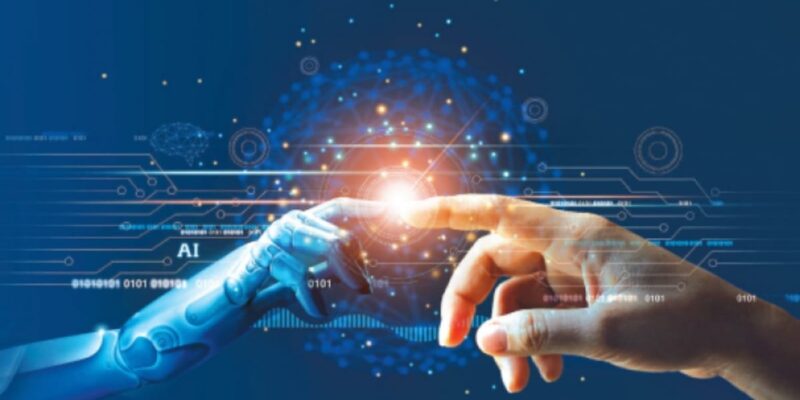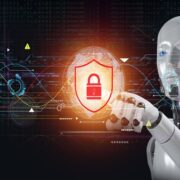New Delhi [India], November 25: The global technological landscape is evolving at an unprecedented pace, with innovations like Artificial Intelligence (AI), 5G, and Quantum Computing leading the charge. While these advancements promise immense opportunities for various sectors, they also introduce significant cybersecurity challenges. IAS officer Padama Jaiswal, a 2003-batch officer from the AGMUT cadre, has been a stalwart in navigating the complexities of governance in this digital era. Armed with an MBA from Panjab University and a Company Secretary qualification, she has held critical roles across government and regulatory bodies like the RBI, SEBI, and the Election Commission. Currently, she serves as Secretary to the Government for Union Territories and States, where her responsibilities include policy formulation and implementation in coordination with ministers or the Council of Ministers.
Her insights shed light on the profound transformations and vulnerabilities brought about by AI, 5G, and Quantum Computing, emphasising the need for robust regulatory frameworks, public-private collaboration, and innovative cybersecurity measures to tackle emerging threats.
AI: The Double-Edged Sword in Cybersecurity
AI is a transformative force, offering tools to bolster cybersecurity while simultaneously empowering cybercriminals to execute sophisticated attacks. Organisations worldwide leverage AI to predict and prevent cyber incidents. In India, initiatives like the Computer Emergency Response Team (CERT-In) deploy AI to monitor government networks, identifying threats in real time. Similarly, financial institutions use AI-driven fraud detection systems to combat phishing and identity theft, enhancing the security of banking operations.
However, AI’s capabilities can also be misused. In India, hackers have exploited AI to simulate authentic bank communications, deceiving customers into revealing sensitive credentials. On a global scale, deepfake technologies have been weaponised. For instance, in the UK, attackers used AI-generated audio to impersonate a CEO, resulting in a fraudulent transfer of over $243,000. These examples underscore AI’s dual nature—both as a guardian and a threat in the cybersecurity landscape.
5G Networks: The Promise and Perils of Hyperconnectivity
The rollout of 5G networks has revolutionised industries by enabling faster connectivity and supporting the Internet of Things (IoT). Cities like Pune and Bengaluru exemplify this transformation, leveraging 5G-powered IoT systems for traffic management, healthcare, and utilities. However, this connectivity comes at a cost—an expanded attack surface for cybercriminals.
IoT vulnerabilities are particularly concerning. In Delhi, an attack on an IoT-enabled ventilator highlighted the potential for life-threatening consequences. Internationally, Finland witnessed a DDoS attack on IoT-connected security cameras, compromising an entire hotel’s surveillance system. Such incidents demonstrate the urgency of implementing stringent IoT security standards and adopting zero-trust frameworks. Countries like Japan and South Korea have already mandated these measures for their 5G networks, setting benchmarks for global cybersecurity practices.
Quantum Computing: The Encryption Challenge
Quantum Computing, though in its infancy, poses a looming threat to traditional encryption methods. Its unparalleled processing power could potentially decrypt sensitive data, jeopardising financial systems, defence communications, and personal information. India’s economic ecosystem, heavily reliant on encryption for securing Aadhaar-linked accounts, is particularly vulnerable.
Recognising this risk, India has initiated steps to prepare for a quantum future. In 2022, the Indian Space Research Organisation (ISRO) successfully demonstrated Quantum Key Distribution (QKD) between two cities, laying the groundwork for unhackable communication channels. Additionally, the Reserve Bank of India (RBI) is researching quantum-safe cryptography to safeguard financial transactions. These efforts align with global initiatives, such as the development of post-quantum cryptography standards to protect critical infrastructure.
Cascading Failures: The Domino Effect of Cyber Threats
The convergence of AI, 5G, and IoT introduces systemic risks, where failures in one domain can ripple across interconnected sectors. A stark example occurred in Mumbai in 2021, where a suspected cyberattack on the power grid caused widespread outages. Similarly, Ukraine has faced cyberattacks on its power grid, leading to nationwide blackouts.
AI-powered malware and 5G networks exacerbate these risks. In South Korea, hackers exploited AI-driven malware to compromise autonomous vehicle systems, averting potential disasters only through timely detection. Such incidents underscore the need for real-time monitoring and robust public-private collaborations. In India, the National Critical Information Infrastructure Protection Centre (NCIIPC) partners with private companies to secure sectors like telecom, energy, and transport, mirroring global efforts in the United States and the European Union.
Mitigating Cyber Risks: Strategies for Resilience
To combat the evolving threat landscape, nations must adopt a multi-pronged approach to cybersecurity. India has demonstrated commendable progress in this domain. For instance, the Maharashtra Cyber Cell’s use of AI-powered incident response tools successfully thwarted a large-scale ransomware attack on Mumbai’s municipal corporation in 2023.
Globally, collaborative frameworks are proving effective. Israel’s Cyber Defence Authority has established public-private partnerships to counter ransomware attacks, while Singapore’s cyber hygiene campaigns educate citizens about phishing and social engineering threats. Similarly, the Reserve Bank of India’s focus on quantum-safe cryptography aligns with efforts by the National Institute of Standards and Technology (NIST) in the United States, which is developing advanced encryption standards.
Zero-trust security models are gaining traction worldwide. The U.S. federal government has mandated zero-trust architectures across all agencies by 2024, a standard that India’s 5G operators are beginning to adopt. These models, which assume no entity is inherently trustworthy, are vital for safeguarding critical systems.
Securing the Future: Collaboration and Innovation
The rapid proliferation of AI, 5G, and Quantum Computing offers transformative opportunities while introducing unprecedented cybersecurity risks. Padama Jaiswal’s insights highlight India’s proactive measures, including AI-based threat detection, quantum-safe encryption, and zero-trust frameworks, to address these challenges.
India’s collaborative efforts, such as those between NCIIPC and private companies, mirror global initiatives. Public-private partnerships in the United States, Japan, and South Korea demonstrate the importance of joint efforts in managing cyber risks. As cyber threats grow more sophisticated, global cooperation, regulatory foresight, and technological innovation will be critical.
By adopting a forward-thinking approach and embracing cutting-edge solutions, nations can secure their digital infrastructure, ensuring a resilient future in an increasingly interconnected world.
If you have any objection to this press release content, kindly contact pr.error.rectification@gmail.com to notify us. We will respond and rectify the situation in the next 24 hours.






